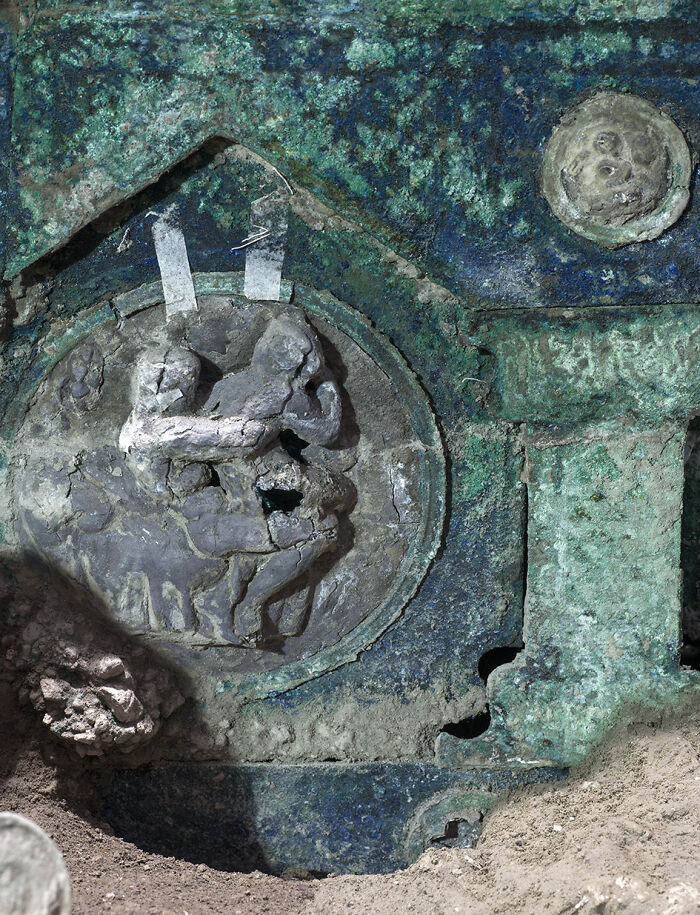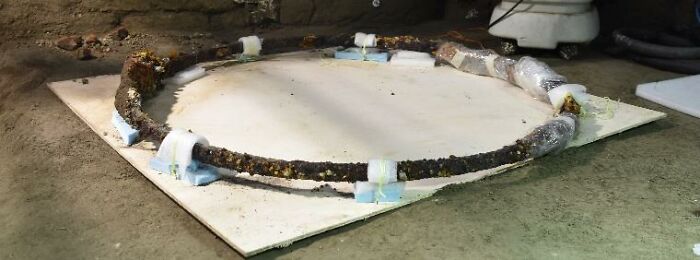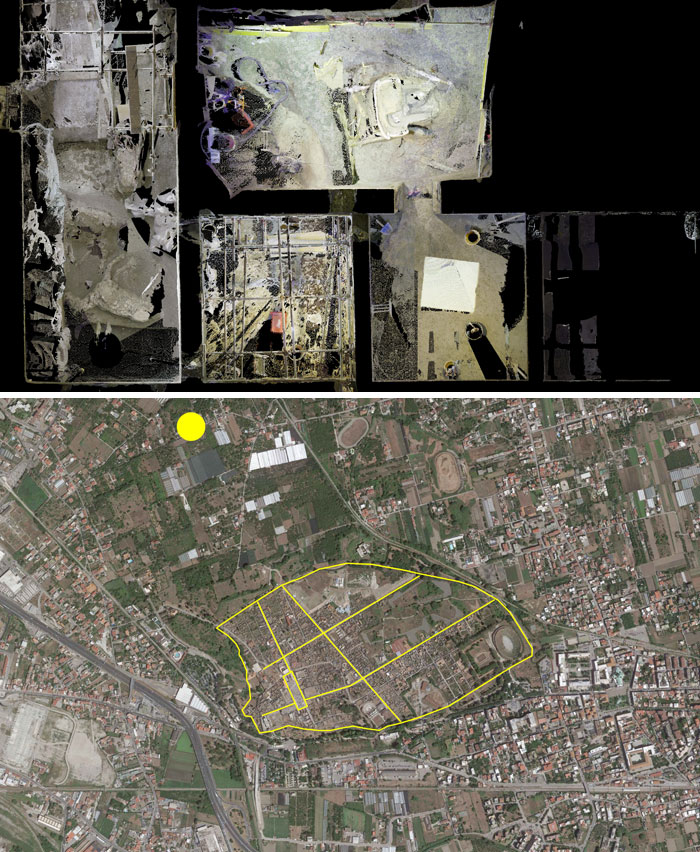
A Perfectly Preserved Roman Ceremonial Carriage That Got Buried In A Volcanic Eruption 2000 Years Ago Gets Discovered By Archaeologists In Italy
The ancient city of Pompeii near Naples in Italy was lost when ashes buried it after the eruption of Mount Vesuvius in 79 AD. The first time when the ruins of Pompeii were found was in the 16th century and intentional excavations began in the mid-18th century. The area is 66 hectares (165 acres) large and even after a few centuries, archeologists haven’t stopped making new discoveries.
The area is an archeological treasure trove. During excavations a row of shops, a large amount of jewelry, vases, statuettes, gold, silver, and bronze coins, frescoes, murals, and mosaics were found. Also the remains of the people who became victims of a natural disaster. And a third of the area still remains unexplored. Now a new artifact was uncovered–an almost entirely intact ceremonial chariot.
The latest discovery in the archeological park of Pompeii is an almost intact four-wheel chariot
Image credits: Luigi Spina
One of the newest discoveries in the Archaeological Park of Pompeii was made January 7th this year. Archeologists unveiled a ceremonial chariot. It was found near a stable where three horses were uncovered back in 2018. Although the chariot is in good shape for being buried for two millennia under ashes and surviving the collapse of the walls and ceiling, it was very fragile and archeologists were using special techniques to uncover it without damaging it.
Image credits: Pompeii Sites
Because of the fragile state of the chariot it was difficult to excavate it
Image credits: Luigi Spina
The discovery was made after starting an investigation of illegal digging. Looters dug tunnels through the site leading to one of the villas. They grazed the four-wheeled chariot, but luckily, didn’t damage it.
During the weeks archeologists were uncovering the chariot, the site was guarded by local officers to prevent any looters form stealing. To make sure the chariot was salvaged, archeologists worked on weekends just so they could transport the chariot to a safe place to examine as soon as possible. Now it is being further cleaned from the volcanic material in the laboratory where experts will begin a lengthy restoration and reconstruction process.
The chariot was found in a double-level portico connected to stables at an ancient villa at Civita Giuliana
Image credits: pompeiisites
The chariot could have been used to carry the bride to her new household
Image credits: Luigi Spina
The discovery of this chariot is exceptional not only because it is preserved in its entirety, but also because previously only practical vehicles used for transport and work were found, but this time there is proof that leads to believe that the newly found chariot was used for ceremonies. The chariot was decorated with iron components, bronze and tin embellishments. Archeologists also found traces of cushions, ropes and an imprint of two grains of wheat on the seat. The grains of wheat could indicate someone wishing the married couple fertility.
The director of the Archaeological Park of Pompeii, Massimo Osanna, believes that the decorations can indicate that the chariot was used in community festivities such as parades, processions, and weddings. It could have been used to carry the bride to her new household.
The bronze medalions surrounded by decorative motifs, represent male and female figures in relief, depicted in erotic scenes
Image credits: Luigi Spina
Image credits: Luigi Spina
This is the first chariot of its kind found in Italy, as previously found carriages were used only for transportation
Image credits: Luigi Spina
This carriage is first of its kind found in Italy. Massimo Osanna described it as “an extraordinary discovery that advances our understanding of the ancient world.” It could only be compared with carriages found 15 years ago in Thrace, Northern Greece on the boarder with Bulgaria. One of those carriages is similar to the one found in Pompeii, but it didn’t have decorations on it. These kinds of chariots, called pilentum, were used by the wealthy for religious cults, but also to represent the owner’s higher status.
Image credits: Luigi Spina
The image shows the back of the chariot, with the ornate designs highlighting its ceremonial use
Image credits: Luigi Spina
This particular villa to the north of Pompeii in Civita Giuliana, in which the chariot was found is very big and valuable for research, because it still had people living it during the eruption. A lot of other villas were emptied for renovations after an earthquake in 62 AD.
The Minister of Culture Dario Francheschini commented that “Pompeii continues to amaze with all of its discoveries, and it will continue to do so for many years yet, with twenty hectares still to be excavated. But above all, it demonstrates that valorisation can occur and tourists can be attracted from all over the world, whilst at the same time research, education, and studies are being conducted, and a young director like Zuchtriegel will develop this commitment.”
Image credits: Luigi Spina
Image credits: Luigi Spina
Image credits: pompeiisites
The Villa Civita Giuliana is located to the north of Pompeii
Image credits: Luigi Spina
Image credits: Pompeii Sites
This find attracted not only the attention of scientists, but people on the internet where fascinated about the incredibly well preserved chariot too. Here are some comments of what people said.
These are people’s reactions to the new discovery in Pompeii
43Kviews
Share on Facebook*pulls up to pompeii drive-thru in this* yeah i'd like one caesar saladus
*pulls up to pompeii drive-thru in this* yeah i'd like one caesar saladus

 Dark Mode
Dark Mode 

 No fees, cancel anytime
No fees, cancel anytime 










































































123
8